Established in 1839 with the intention of becoming Iowa’s new capitol, Iowa City has been home to some of the most significant moments of our state’s history. As one of the first major parts of Iowa to be settled, this area is also home to some of the most notable historic houses in the state.
Though much has changed about the Corridor in the last 180 years, many of these homes are still standing today and are a point of pride for local residents. Many of them also still function as residences, meaning they pop up on the market from time to time. For those interested in buying a historic home—or those planning to sell one—here’s what you need to know before you begin your search or sale.
What Makes a Home Historic?
First things first: what makes a home historic?
Age Isn’t Everything
While there’s no specific age at which a home becomes historic, there’s more to it than just being an old home. At the end of the day, it often comes down to the home’s personal history. Did someone famous or notable live there? Was it built by an architect of great renown? Is there something about the style or the architecture that makes it unique or significant? Is it located in a historic district? This coupled with the home’s age is often what gives it a special designation.
The National Register of Historic Places
There’s also a difference between a historical home and a home listed on the National Register of Historic Places, a program overseen by the National Park Service. Properties listed on this registry have undergone a strict application and review process and were determined to be historically significant enough to be worthy of preservation. More than 96,000 properties are on this list from almost every county in the nation. Iowa alone has upwards of 2,000 properties on the registry, totaling more than 15,000 buildings, structures, and sites. However, the list is still not comprehensive. Just because a home is missing from the historic registry does not mean it doesn’t have a rich past.
Selling a Historic Home
In general, the process of selling a historic home is not too different from selling a more modern abode. If you can, look for an agent who has experience selling historic homes. (We’ve got plenty of them at Urban Acres, so be sure to ask your agent about their experience with historic homes!).
Become An Expert
Be sure to disclose everything you know about your home’s history to your agent, especially if your home is listed on the National Register of Historic Places. You and your agent may want to dig even further into this history. This information can be used to market the home, helping you get top dollar for your sale. Of course, be sure you’re basing this historical significance in fact and not fiction—fables don’t hold up on the market. At the end of the day, both you and your REALTOR® should be experts on the home and ready to answer questions about your home’s history.
What’s My Historic Home Worth?
When it comes to pricing the home, your agent will take into account all of the normal factors they usually consider: size, location, condition, and so on. However, some of these factors take on a greater weight when pricing a historic home. For example, being located in one of Iowa City’s eight historic districts often adds value to the home. Age, of course, plays a major role; while sometimes a detriment to more modern homes, age can be an asset when it comes to historic homes, especially if it is well maintained. If the home is in bad shape or will require extensive repairs, though, it will most likely be a detriment to its value. Again, much of it comes down to the lineage and personal history of the home.
Long story short, the better the condition and the richer the history, the more the home will likely be worth.
Buying a Historic Home
Like selling, buying a historic home isn’t wholly different than buying a more recently built home. There are a few things to keep in mind though as you embark on your search for a piece of local history.
Budget Your Time and Money Accordingly
First, be prepared for your buying journey to potentially take a bit longer. While historic homes are plentiful in this area, they are still far outnumbered by more contemporary homes, so they don’t hit the market as frequently. Finding exactly what you’re looking for may not happen overnight!
Also be sure you’ve budgeted accordingly, especially if you’re searching for an older home in well-kept condition. Like we talked about above, a home’s history often adds to the price, especially if it is well-preserved.
Even if you’re planning to purchase a historic fixer-upper, keep in mind that restoration may be more costly than renovating a modern home. Materials that fit the time period of your home may be harder to come by and more expensive. There’s also a potential risk for necessary updates to bring things such as your electricity or plumbing up to code, depending on how outdated they currently are in the home.
Be Aware of Local Limitations and Funding
One important thing to note is that updates to historic homes are often regulated. For homes located in Iowa City historic districts, any changes to the exterior of the home must be approved first by the Historic Preservation Commission. This helps to ensure that your updates maintain the look, feel, and character of the home’s historical time period. In other words, any changes you make must be geared toward preservation, not modernization.
The approval process differs based on the complexity of the updates. Failing to obtain a permit before making such changes can lead to disciplinary action. If you’re the type of person who wants complete freedom and autonomy when it comes to your home, purchasing a home in a historic district might not be the best option for you.
However, there are also local grants that may help offset the costs of your home’s preservation. For example, Iowa City’s Historic Preservation Fund offers grant and loan opportunities to help owners of historic homes make exterior improvements—especially improvements that restore the home to its original historic character.
In-Depth Inspections
Inspections are an important part of any home buying process, but are especially crucial for older homes. If at all possible, use an inspector who has experience with historic or older homes (ask your Urban agent for a recommendation!). Older homes often mean older “bones”—in other words, the inner workings of the home that may not be visible to the eye, but that an experienced inspector would know to look for. Diligence in the inspection now can help avoid unexpected bills later.
A Connection to the Community’s Past
All that being said, why buy a historic home in the first place?
For many people, it boils down to pride in owning a piece of local history. That sense of personal satisfaction and connection to our community’s past is unique and meaningful, especially for history buffs who truly appreciate the story of the home—a story that you now get to be a part of. There’s also nothing quite like the charm of living in an antique. After all, not everyone can say that they’re helping to keep history alive!
Historic Homes in the Iowa City Area
Driving through the heart of Iowa City, it’s not hard to spot the beautiful architecture of the many historic homes that make up Iowa City’s eight historic districts (Brown Street, College Green, East College Street, Jefferson Street, Longfellow, Northside, Summit Street, and Woodlawn districts) and five conservation districts (Clark Street, College Hill, Dearborn Street, Goosetown/Horace Mann, and Governor-Lucas Street).
Here are a few of the more notable homes—notable enough to have earned a name!
The Moffitt Cottages | Muscatine Ave, Iowa City
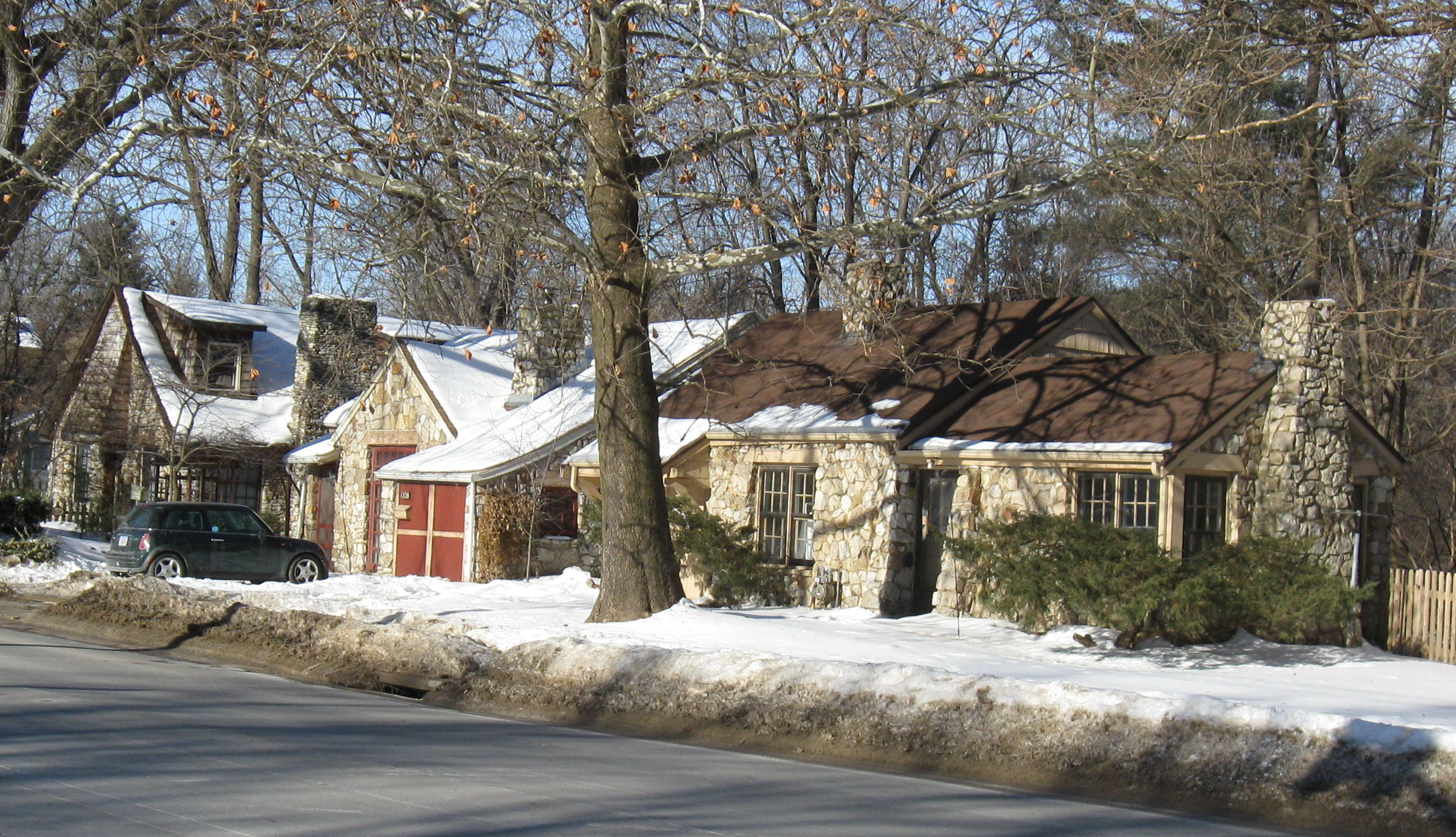
Image Credit: Billwhittaker at English Wikipedia, CC BY-SA 3.0, via Wikimedia Commons
Listed on the National Register of Historic Places is the Muscatine Avenue Moffitt Cottage Historic District, a group of five stone cottages built by Howard Moffitt. Though he had no formal education in architecture or construction, Moffitt built more than 100 homes in the Iowa City-Coralville area in the 1920s, 30s, and 40s. Moffitt’s style was described as “quirky” and “eccentric.” While no two of his homes are the same, common themes include steep roofs, large tapered chimneys, built-in garages, stone exteriors, and an eclectic use of miscellaneous recycled materials—a trademark that earned him the title as one of the first “green” builders.
Oakes-Wood House | 1142 E Court St, Iowa City
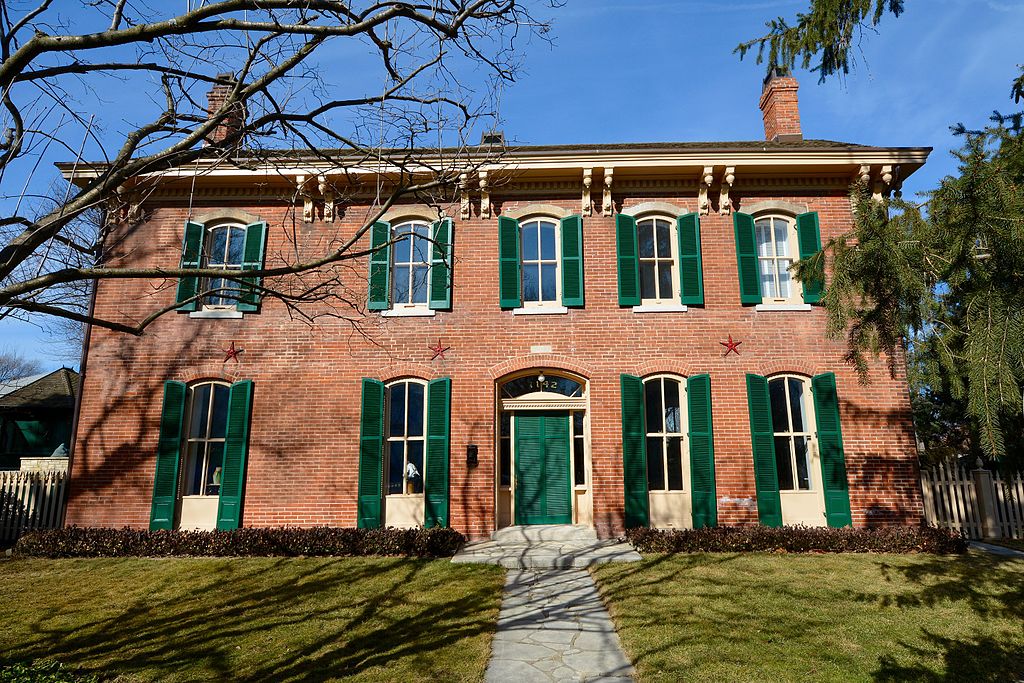
Image credit: Boscophotos, CC BY-SA 3.0, via Wikimedia Commons
Built in 1858 by Nicholas Oakes, this home is best known as the residence of renowned painter Grant Wood, who bought and rebuilt the home in 1935. Wood lived here from 1935–1942 while he worked as an art professor at the University of Iowa. He painted some of his most famous works here before he passed away in 1942.
Local attorney and avid art collector Jim Hayes acquired the home in 1975 and has been working to restore and preserve its legacy ever since. It was named to the National Register of Historic Places in 1978, and Hayes intends to leave the home and its surrounding buildings—collectively called the Grant Wood Art Colony—to the University of Iowa when he passes.
Lindsay House | 935 E College Street, Iowa City
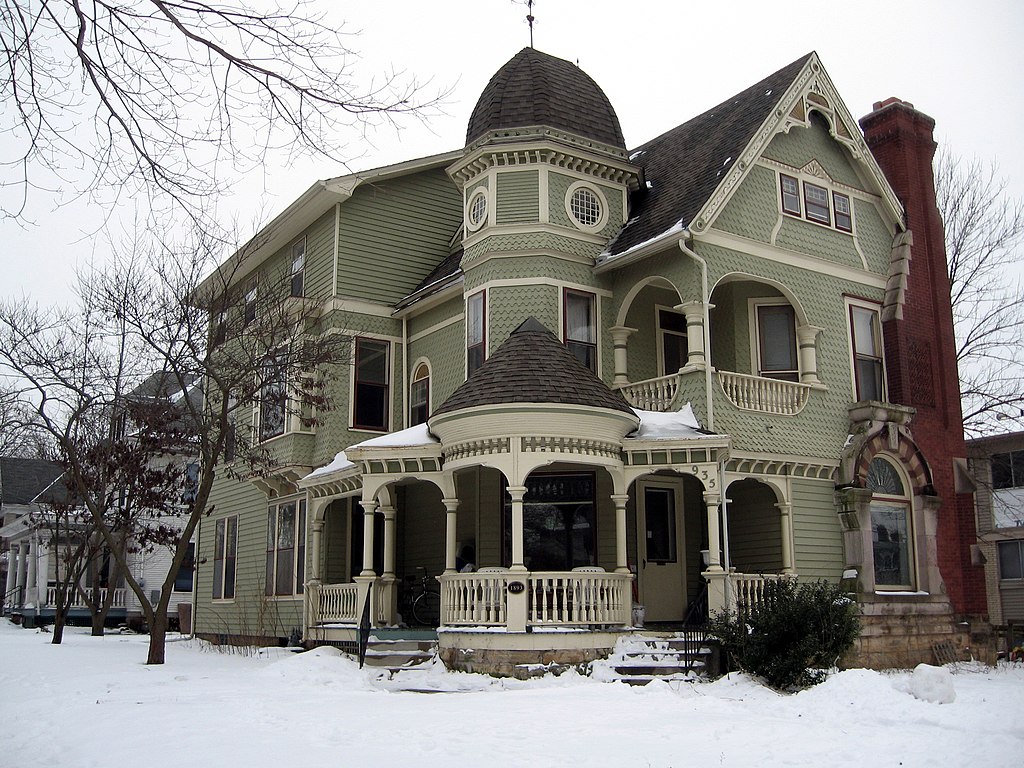
Image Credit: Billwhittaker at English Wikipedia, CC BY-SA 3.0, via Wikimedia Commons
The Lindsay House—also known as the Linsay house due to it being misspelled when it was first listed on the National Register of Historic Places in 1977—was built in 1893 by John Jayne. Jayne gave the home to his daughter, Ella, and her husband, John Lindsay, which is where the home derives its name. When the Lindsays moved to Chicago, the house was divided into apartments.
This house has yet another moniker: The Bloom County House. This is because the home was used as the inspiration for the boarding house in Berkeley Breathed’s comic strip Bloom County. Though Breathed mocked the building’s mashup of architectural styles in the comic strip, this unique home—featuring a corner chimney and an octagonal tower, among other things—is quite a sight to see in person.
Bohumil Shimek House | 529 Brown Street, Iowa City
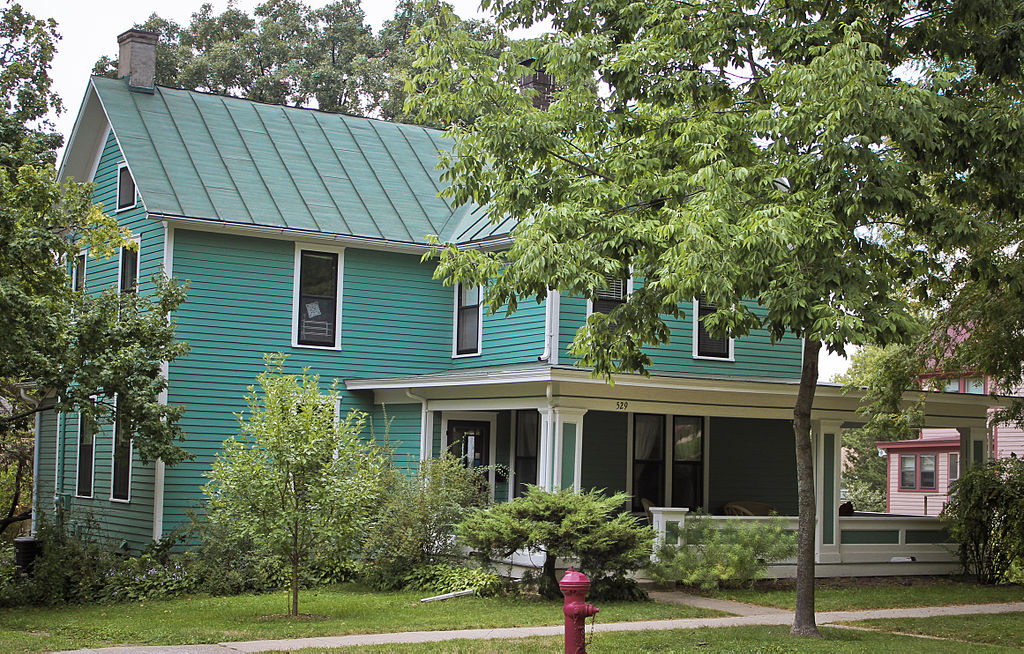
Image Credit: Zachary Roper, CC BY-SA 3.0, via Wikimedia Commons
Built around 1890, this Folk Victorian-style home wasn’t listed on the National Register of Historic Places until over a century later in 1991.
Though old and architecturally significant, this home is better known—and named—for the man who occupied it: Bohumil Shimek, a naturalist, conservationist, and University of Iowa professor. Shimek lived in this home from 1899 until his death in 1937. Among other accomplishments, he is best known for helping to establish the state park system in Iowa as well as the Upper Mississippi River National Wildlife and Fish Refuge. Almost all of these major accomplishments in his career occurred while he lived at 529 Brown Street. The Shimek State Forest in Lee County, Iowa, is named after him, as well as Shimek Elementary School in Iowa City.
Musser-Dixon House | 715 E College Street, Iowa City
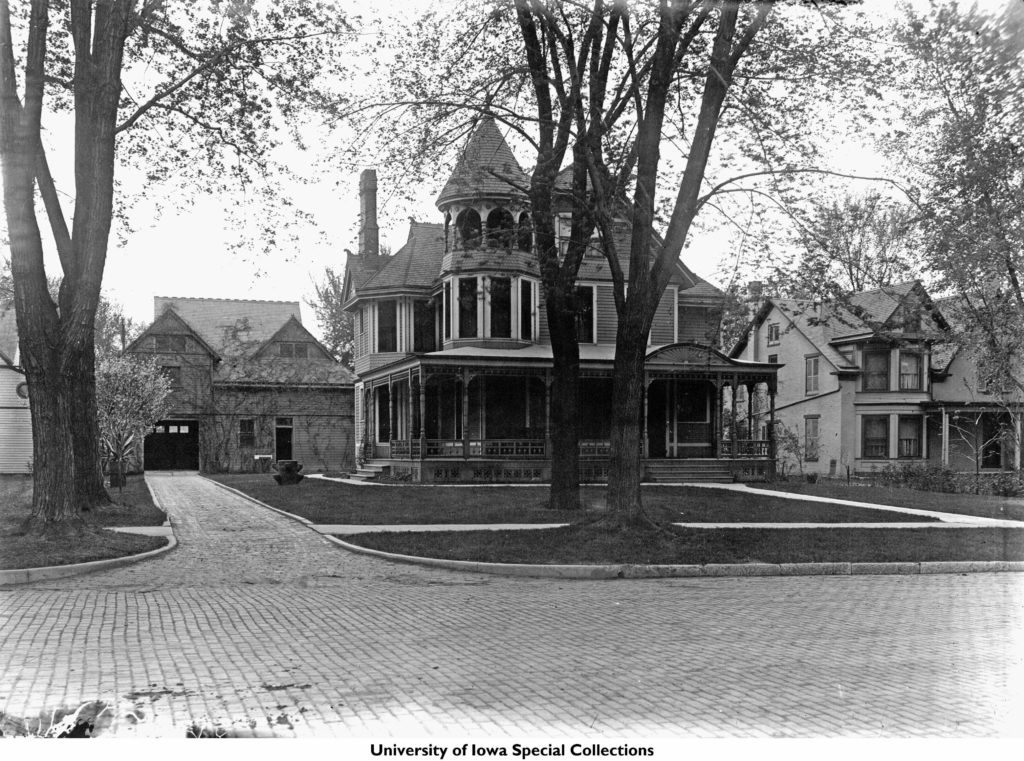
Image credit: UI Libraries
Now known as the Musser-Dixon-Bostian-Kim House, this Queen Anne-style home—complete with an elaborate turret—was built in 1890 by William Musser. It was purchased by James Dixon, a University of Iowa symphony conductor and music professor in 1963, thus adding “Dixon” to the name. Miera Kim and her husband, Carey Bostian, inherited the home from Dixon more than 15 years ago, completing the lengthy hyphenated name of this 131-year-old home.
Thomas C Carson House | 906 E College St, Iowa City
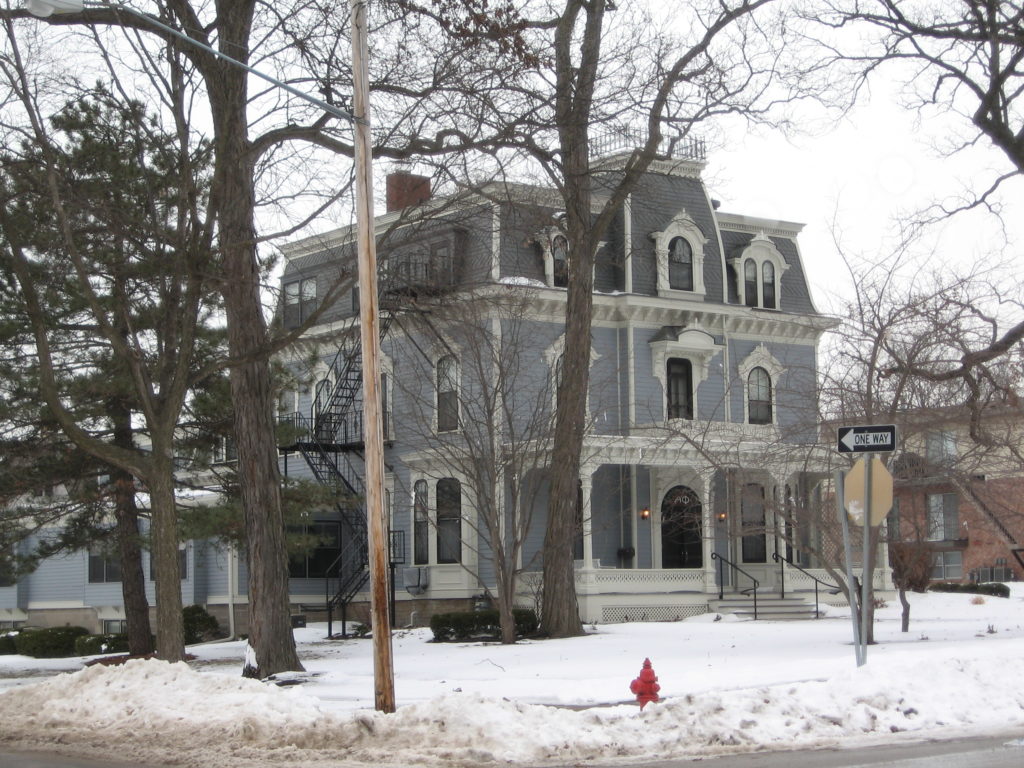
Photo credit: Billwhittaker at English Wikipedia, CC BY-SA 3.0, via Wikimedia Commons
Though most people know it today as the sorority house for the University of Iowa’s Alpha Phi chapter, this elaborate 3-story house has a rich history. This home—built in the regal Second Empire style—was constructed in 1875 for Thomas C. Carson, a passenger on the very first train to enter Iowa. The home is listed on the National Register of Historic Places.
Plum Grove | 1030 Carroll St, Iowa City
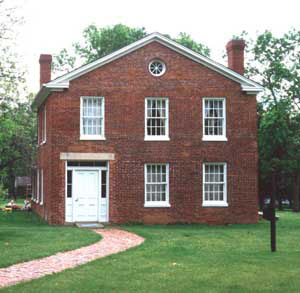
Image Credit: Billwhittaker at English Wikipedia, CC BY-SA 3.0, via Wikimedia Commons
Plum Grove was home to the first governor of the Territory of Iowa, Robert Lucas, who served from 1838-1841. Though Lucas didn’t live at Plum Grove while he was governor, he returned to Iowa permanently in 1844 after a brief stint in Ohio and built Plum Grove, where Lucas lived until his death until 1853. The Greek Revival-style home was sold in 1866 and had several owners before the State of Iowa bought the property in the early 1940s and set about restoring it.
Originally situated on the outskirts of Iowa City on an 80-acre farm, the city has grown to surround the home, which now sits in the middle of a residential neighborhood in eastern Iowa City. Plum Grove is the only home on this list that no longer functions as a personal residence. Today, the home is furnished to look as it would’ve when Lucas lived there in the 1840s and 50s and is open for tours.
To Recap
A historic home may require a bit more time and money than a modern home, but if you’re the type of person who cares deeply about local history, the extra effort will be worth it in the end. There’s no doubt that the remarkable homes in the Iowa City area have witnessed plenty of history inside their walls.
Whether you’re looking to buy or sell a historic home in the area or have something a bit more modern in mind, our agents can help. Reach out today!





